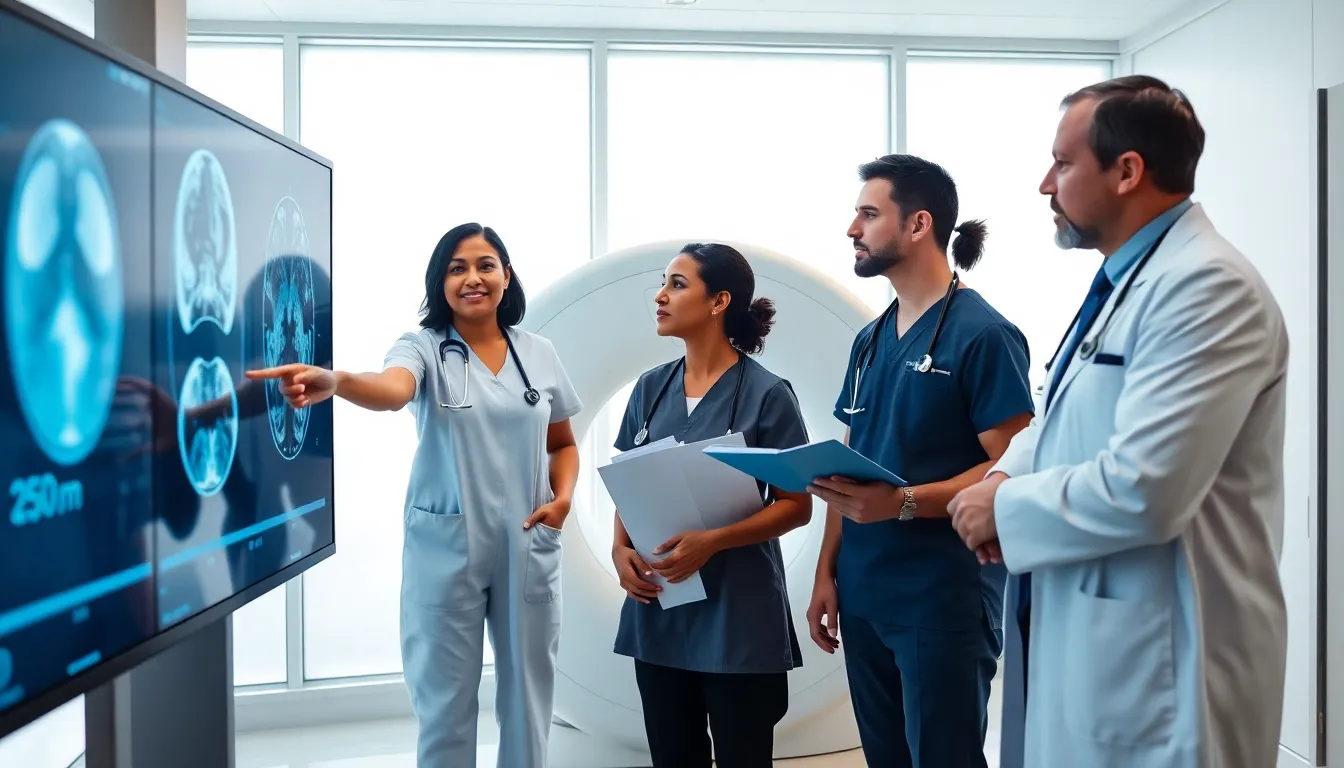Table of Contents
ToggleEver wondered what goes on behind the scenes in the world of radiology? Meet the rediyolojist, the unsung hero ensuring your images aren’t just fascinating black-and-white puzzles. With a unique blend of knowledge and technology, these professionals make the invisible visible. But wait, before you dismiss radiology as just another medical job, think again. Let’s jump into the captivating world of rediyolojists, where they unravel mysteries that help diagnose and treat health conditions. Ready to explore the ins and outs? Let’s go.
Rediyolojist

A rediyolojist, or radiologist in more commonly known terms, is a medical doctor who specializes in diagnosing and treating diseases using imaging techniques. From X-rays to MRIs, these professionals do it all. They interpret the images generated from various machines to assist other doctors in making diagnoses. Think of them as medical detectives, scrutinizing details that others might miss, eventually leading to crucial treatment decisions.
What makes a rediyolojist stand out is their extensive knowledge in medical imaging as well as a deep understanding of the anatomy and how diseases manifest. They’re equipped to communicate the findings clearly to both patients and healthcare teams, making sure everyone understands the potential implications of the results.
The Role of a Rediyolojist in Healthcare
The role of a rediyolojist extends far beyond simply interpreting scans. They collaborate closely with other medical professionals like surgeons, oncologists, and internists to develop comprehensive care plans. Imagine a puzzle where each piece represents a different specialist: the radiologist fits the pieces together by providing critical insights from imaging.
Besides, rediyolojists play a vital role in procedures that involve image-guided technologies. They perform biopsies, drain fluid collections, and sometimes even guide interventional procedures all while ensuring patient safety. This intricate dance of teamwork within healthcare exemplifies their importance.
Education and Training Required to Become a Rediyolojist
Becoming a rediyolojist is no walk in the park. It requires years of education and training that typically begins with a bachelor’s degree followed by a medical degree, which can take around four years. After earning that coveted MD or DO title, aspiring rediyolojists must complete a residency program in radiology, lasting about five years.
On top of that, they often pursue further specialization through fellowships in areas like interventional radiology, pediatric radiology, or nuclear medicine. This level of commitment highlights not only the complexity of the field but also the passion required to excel as a rediyolojist.
Key Skills and Attributes of a Successful Rediyolojist
Success as a rediyolojist hinges on a blend of technical proficiency and exceptional soft skills. First and foremost, they need excellent critical thinking abilities, allowing them to analyze complex images and draw correct conclusions quickly. Besides, attention to detail is paramount: missing a small abnormality can have significant consequences.
Communication skills are essential too. A rediyolojist must convey findings accurately to referring physicians and provide clear explanations to patients. Empathy, too, plays a role: understanding that behind every image is a person waiting to hear crucial health news is fundamental to patient care.
Technological Advancements in Radiology
In today’s fast-paced world, technology is evolving at breakneck speed, and radiology is no exception. New imaging techniques and modalities have transformed how rediyolojists perform their jobs. Computerized tomography (CT) and magnetic resonance imaging (MRI) remain staples, but innovations such as 3D imaging and AI integration are making waves.
AI, in particular, is a game changer, assisting radiologists in analyzing images faster and more accurately. Imagine a Robin to their Batman, tackling boring and repetitive tasks, allowing rediyolojists to focus on complex cases and patient interactions. This partnership of human and machine offers exciting prospects for the future.
Challenges and Opportunities in the Field of Radiology
Like any field, radiology comes with its set of challenges. An increasing workload, coupled with a shortage of professionals in some areas, leads to burnout among rediyolojists. Also, the rapid pace of technological change requires continuous learning, making it crucial for these professionals to stay updated constantly.
Yet, within these challenges lie remarkable opportunities. The demand for imaging services continues to grow, as healthcare providers recognize their value in diagnosing and evaluating conditions. Besides, advancements in tele-radiology are bridging gaps in access, allowing rediyolojists to provide expertise to remote areas and underserved populations.
The Future of Radiology and the Role of Rediyolojists
The future of radiology looks promising. As healthcare continues to embrace precision medicine, rediyoljists will find themselves at the forefront of this evolution. With a growing emphasis on personalized treatment plans, they will need to integrate their imaging expertise with genetic information and other data sources.
Also, continued advancements in artificial intelligence will transform the landscape, making their role even more vital. Rediyolojists will not only interpret images but also help in developing AI algorithms that improve diagnostic accuracy and efficiency. This merging of the human touch and unparalleled technology is what will define the next era in radiology.




